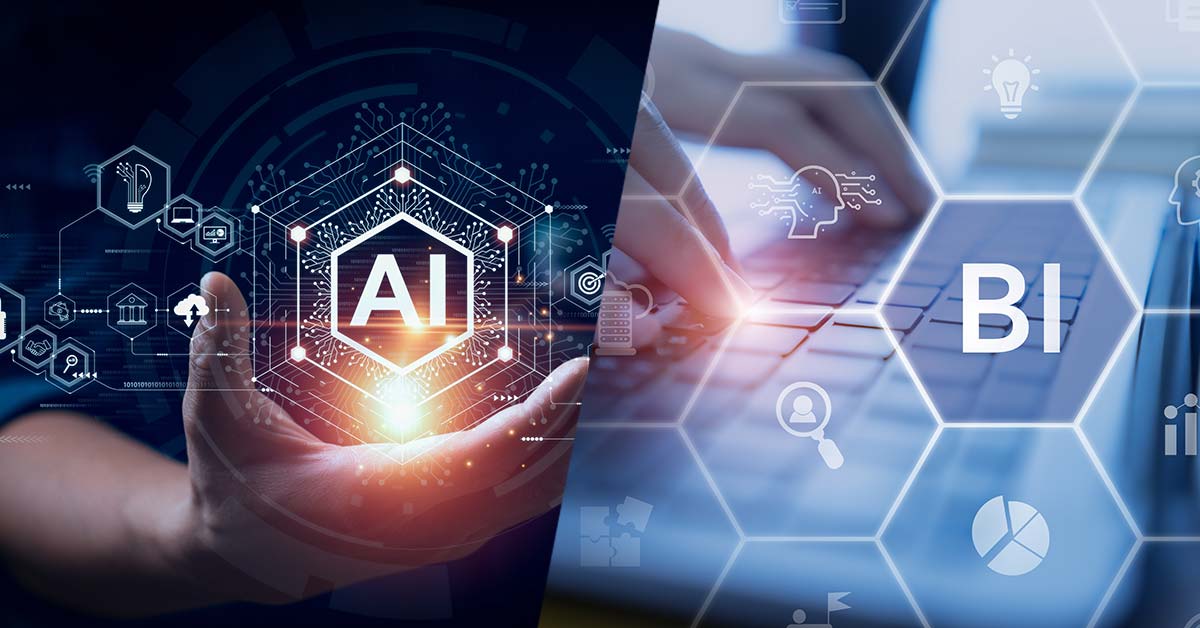Artificial Intelligence (AI) and Business Intelligence (BI) are two transformative technologies that have become integral to modern business operations. While both are geared towards enhancing decision-making processes, they serve distinct purposes and employ different methodologies. Understanding the definitions and goals of AI and BI is essential for businesses aiming to leverage these technologies effectively.
Introduction to AI and BI
What is AI?
Artificial Intelligence refers to the simulation of human intelligence processes by machines, particularly computer systems. These processes include learning, reasoning, and self-correction. AI technologies encompass various subfields such as machine learning, natural language processing, and computer vision.
What is BI?
Business Intelligence involves the analysis of data to provide actionable insights that drive strategic decision-making within organizations. BI tools collect, process, and present data in a user-friendly format, enabling stakeholders to identify trends, patterns, and opportunities.
Understanding AI and BI in Business
Applications of AI in Business
AI has diverse applications across industries, including:
- Predictive analytics for demand forecasting
- Personalized customer experiences through recommendation systems
- Automated decision-making in manufacturing and logistics
- Fraud detection and risk management in finance
- Enhancing healthcare outcomes through diagnostic tools
Applications of BI in Business
BI facilitates data-driven decision-making by:
- Generating reports and dashboards for performance monitoring
- Identifying market trends and customer preferences
- Optimizing supply chain management
- Tracking key performance indicators (KPIs) for strategic planning
- Improving operational efficiency and cost management
Key Differences Between AI and BI
Definitions of AI and BI
AI focuses on mimicking human cognitive functions, whereas BI emphasizes data analysis and reporting. While AI enables systems to learn from data and make predictions autonomously, BI primarily involves descriptive and diagnostic analysis of historical data.
Goals of AI and BI
The primary goal of AI is to enable machines to perform tasks that typically require human intelligence, such as learning, problem-solving, and decision-making. In contrast, BI aims to provide insights that support informed decision-making, optimize processes, and drive business growth.
AI and BI Integration
Importance of integrating AI and BI
Integrating AI and BI allows organizations to harness the strengths of both technologies. By combining predictive analytics capabilities with comprehensive data analysis, businesses can derive deeper insights and make more accurate predictions.
Benefits of AI and BI integration
- Enhanced decision-making through real-time insights
- Improved operational efficiency and resource allocation
- Increased competitive advantage through data-driven strategies
- Better understanding of customer behavior and market trends
- Facilitation of proactive risk management and opportunity identification
Challenges in AI and BI Integration
Data compatibility issues
Integrating AI and BI systems requires ensuring compatibility between different data sources, formats, and structures. Data silos and inconsistencies can hinder the effectiveness of integration efforts and compromise the quality of insights generated.
Complexity in implementation
Implementing AI and BI integration involves addressing technical complexities, organizational barriers, and cultural resistance. Lack of expertise, data governance issues, and legacy infrastructure can pose significant challenges to successful integration.
Case Studies: Successful AI and BI Integration
Examples of companies integrating AI and BI effectively
- Amazon: Utilizes AI algorithms for personalized product recommendations based on BI insights into customer preferences and purchasing behavior.
- Netflix: Leverages AI-driven content recommendation engines integrated with BI analytics to optimize content delivery and enhance user satisfaction.
- Walmart: Implements AI-powered demand forecasting models integrated with BI data analytics to optimize inventory management and supply chain operations.
Future Trends in AI and BI
Advancements in AI and BI technologies
Future developments in AI and BI are expected to focus on:
- Augmented analytics for automated insights generation
- Integration of AI with Internet of Things (IoT) devices for real-time data analysis
- Adoption of AI-driven conversational analytics for natural language processing
- Enhancement of BI platforms with AI-powered predictive modeling capabilities
Impact on business operations
The convergence of AI and BI is poised to revolutionize business operations by:
- Enabling proactive decision-making based on predictive analytics
- Automating repetitive tasks and processes through AI-driven workflows
- Empowering employees with self-service BI tools for on-demand insights
- Driving innovation and agility through data-driven experimentation and optimization
Conclusion
In conclusion, AI and BI are complementary technologies that play distinct yet interconnected roles in driving business success. While AI enables intelligent automation and predictive analytics, BI empowers organizations with data-driven insights and informed decision-making capabilities. Integrating AI and BI offers numerous benefits, including enhanced decision-making, operational efficiency, and competitive advantage. Despite challenges in integration, forward-thinking companies can leverage the synergies between AI and BI to unlock new opportunities and drive innovation in the digital era.


